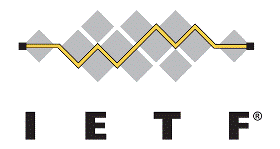Additional information is available at tools.ietf.org/wg/oauth
Chair(s):
Security Area Area Director(s):
Security Area Advisor(s)
|
Meeting Slides:
No Slides Present
Internet-Drafts:
No Request for Comments
Charter:
The Web Authorization (OAuth) protocol allows a user to grant
a third-party Web site or application access to the user's protected
resources, without necessarily revealing their long-term credentials,
or even their identity. For example, a photo-sharing site that supports
OAuth could allow its users to use a third-party printing Web site to
print their private pictures, without allowing the printing site to
gain full control of the user's account.
OAuth encompasses
* a mechanism for a user to authorize issuance of credentials that
a third party can use to access resources on the user's behalf and
* a mechanism for using the issued credentials to authenticate
HTTP requests.
In April 2010 the OAuth 1.0 specification, documenting pre-IETF work,
was published as an informational document (RFC 5849). The working
group has since been developing OAuth 2.0, a standards-track version
that will reflect IETF consensus. Version 2.0 will consider the
implementation experience with version 1.0, a discovered security
vulnerability (session fixation attack), the use cases and
functionality proposed with OAuth WRAP [draft-hardt-oauth-01] and will
* improve the terminology used,
* consider broader use cases,
* embody good security practices,
* improve interoperability, and
* provide guidelines for extensibility.
The working group will develop authentication schemes for
peers/servers taking part in OAuth (accessing protected resources).
This includes
* an HMAC-based authentication mechanism
This document aims to provide a general purpose MAC authentication
scheme that can be used both with OAuth 2.0 but also with other use cases.
The WG will work with the security and applications area directors to
ensure that this work gets appropriate review, e.g. via additional last
calls in other relevant working groups such as HTTPBIS,
* a specification for access protected by Transport Layer Security
(bearer tokens),
* an extension to OAuth 2.0 to allow access tokens to be requested
when a client is in possession of a SAML assertion.
A separate informational description will be produced to provide
additional security analysis for audiences beyond the community
of protocol implementers.
Milestones will be added for the later items after the near-term work
has been completed.



